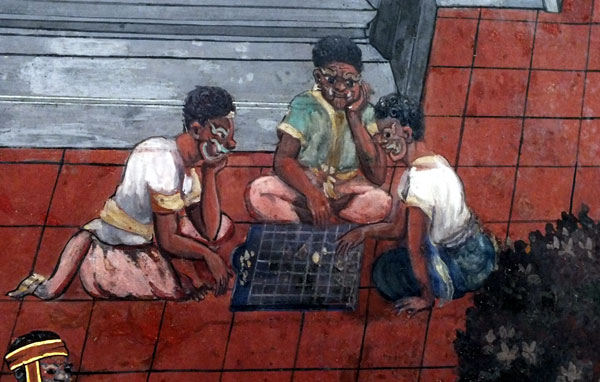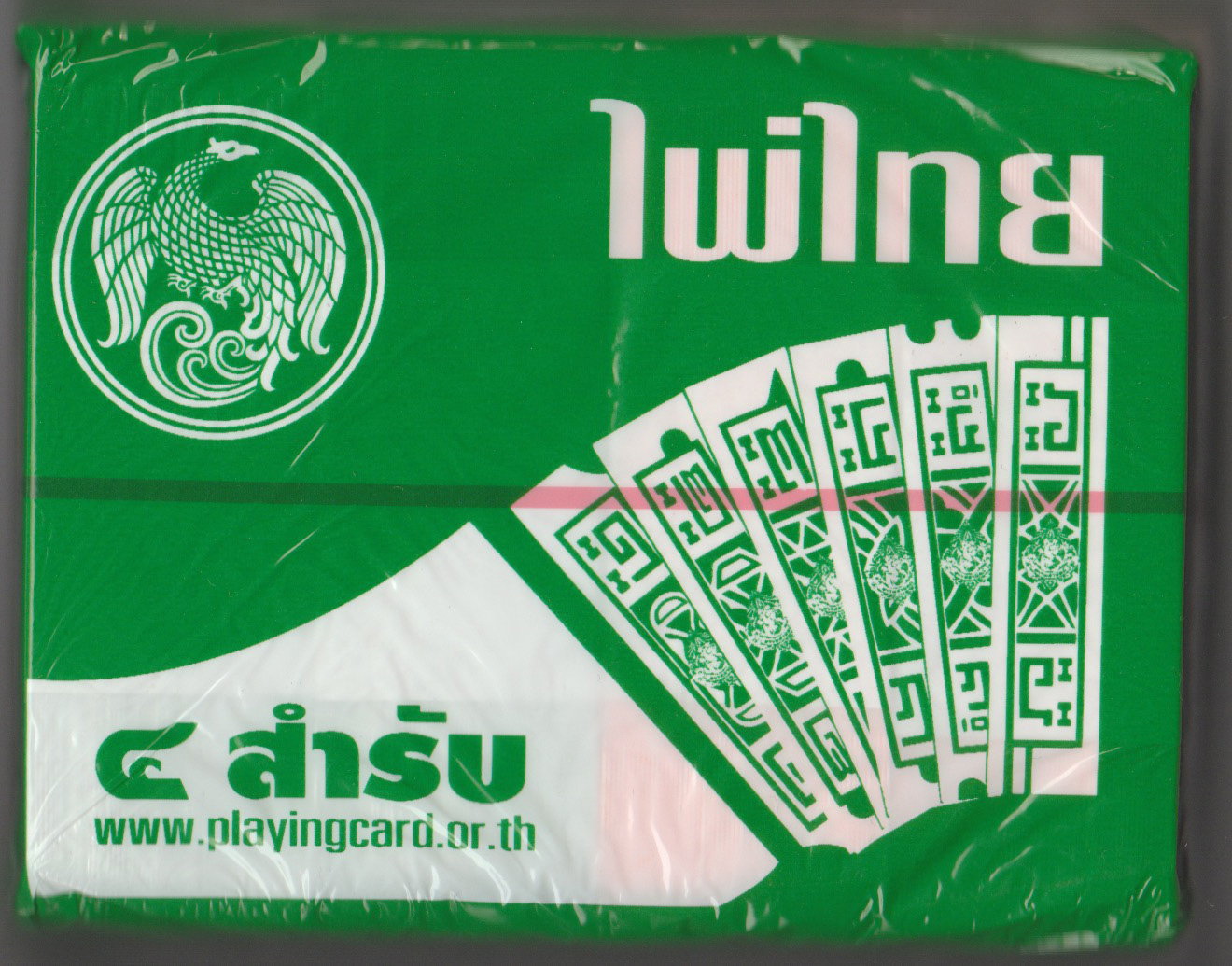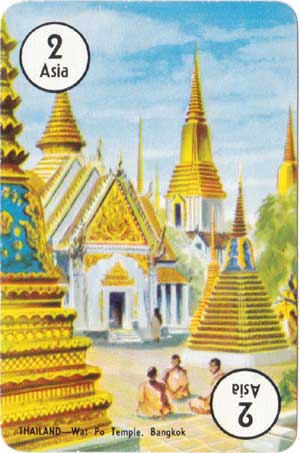Thai & Siamese Playing Cards
The Portuguese were the first Westerners to trade with Ayutthaya in Thailand in the 16th century. Traders also arrived from India, Japan, the Arab world, England, Holland and France.
The Kingdom of Thailand and formerly known as Siam
The start of foreign relations
For millennia Suvarṇabhūmi (now Southeast Asia) has been on the trade route between India and China. The Portuguese were the first Westerners to trade with Ayutthaya in Thailand in the 16th century. Thus European playing cards may have been used alongside locally produced cards.
Traders also arrived from Japan, the Arab world, England, Holland as well as France and often they had their own quarters or village communities. Chinese Money cards are produced in Thailand with Thai indices. The heritage resulting from the presence of foreign cultures in Thailand still exists today.
Background details in otherwise religious temple mural paintings frequently include scenes from daily life.
During the nineteenth century Belgian manufacturers (e.g. Brepols, Van Genechten) and also Camoin of Marseille produced "Chinese" cards for South-East Asian countries including Java, the Celebes, Singapore, Bangkok and possibly China as well (Eugeen van Autenboer, 1976). They also tended to register suitable trademarks for Far Eastern markets, such as tigers, elephants, Japanese spearmen, ostrich, exotic birds and so on.

Above: typical example of 'Chinese' cards exported to Far Eastern countries by Belgian manufacturers such as Brepols or Van Genechten.
Chinatown Gambling Houses, c.1900

Above: 1900; A ‘First Class Gambling House’ in Bangkok’s Chinatown area.

Above: Talat Nang Loeng market, 1900, which was also known for its illegal gambling houses. The entrance still stands today in Bangkok’s Chinatown district.
More contemporary images depict card playing in everyday life.
Thai Gambling laws
The first indication that the Siamese government recognised card playing to be a form of the obsession for gambling was reported in “Gambling in Siam”, Straits Echo, 19 April 1918, Page 6 read here►
A further report about gambling appeared in Malaya Tribune, 16 September 1930, Page 10 read here►How Siam's "Poker Fiends" May Play Under New Laws, The Singapore Free Press and Mercantile Advertiser, 15 September 1937, Page 3 read here►
Thai Playing Cards Manufacturing Factory established 1938
The state-controlled Thai Playing Cards Manufacturing Factory, Bangkok, was established in 1938 and today produces about 400,000 decks per month read more →
The Thai Playing Cards Act, 1943►
Official Excise Department information page►
Thai police arrest elderly bridge players in Pattaya
Thailand has strict anti-gambling laws and it is illegal for individuals to possess more than 120 playing cards read more►
For another story about gambling in Thailand, click here►
Playing Card Related Ephemera
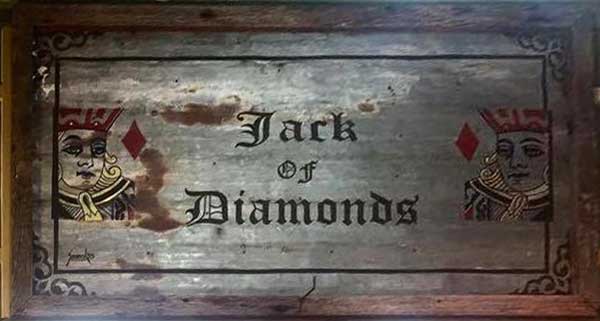
Above: Bric-a-brac shop sign in Bangkok. Perhaps 'Jack of Diamonds' might suggest making some cash from dealing?
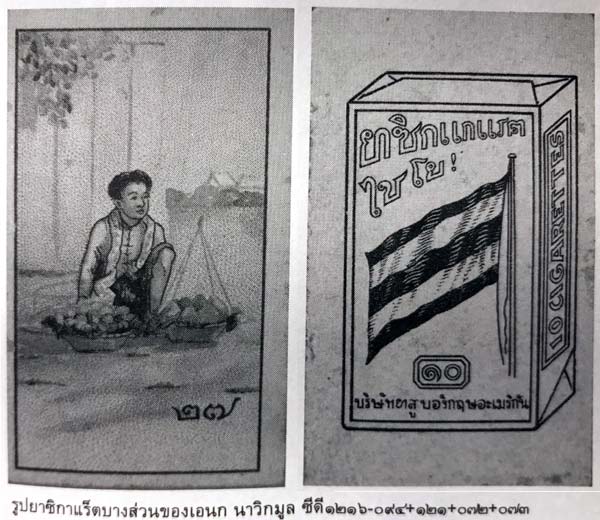
Above: cigarette cards published by tobacco companies.

Above: Playing cards depicted on Thai matchboxes
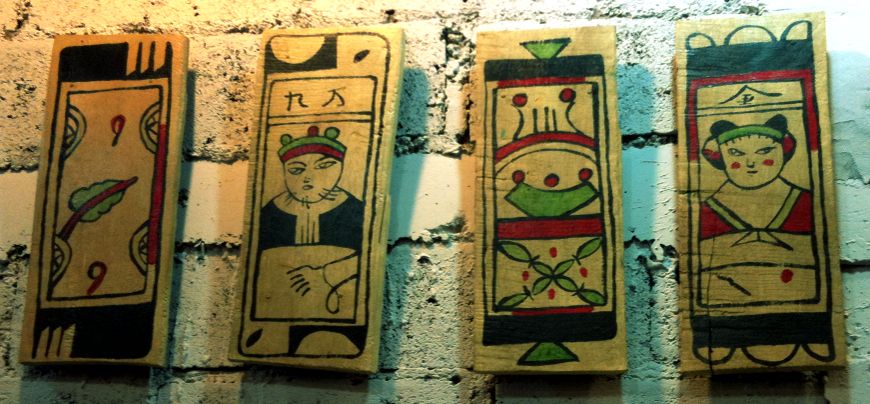
Above: paintings inspired by Chinese playing cards from an exhibition in a Thai restaurant. Photographs by Adam Wintle - click to enlarge.
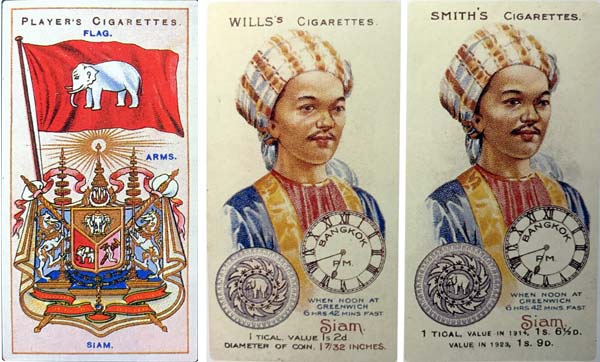
Above: cigarette cards have been published by foreign tobacco companies featuring Thai subjects, such as military uniforms or traditional costumes.

Above: mug produced by C.S. Thai Trading Company Limited.
Children’s Educational Cards
As gambling is technically illegal in Thailand, playing cards are slightly taboo and parents wouldn't want their children to be playing with cards. However, a number of educational sets of cards can be found.
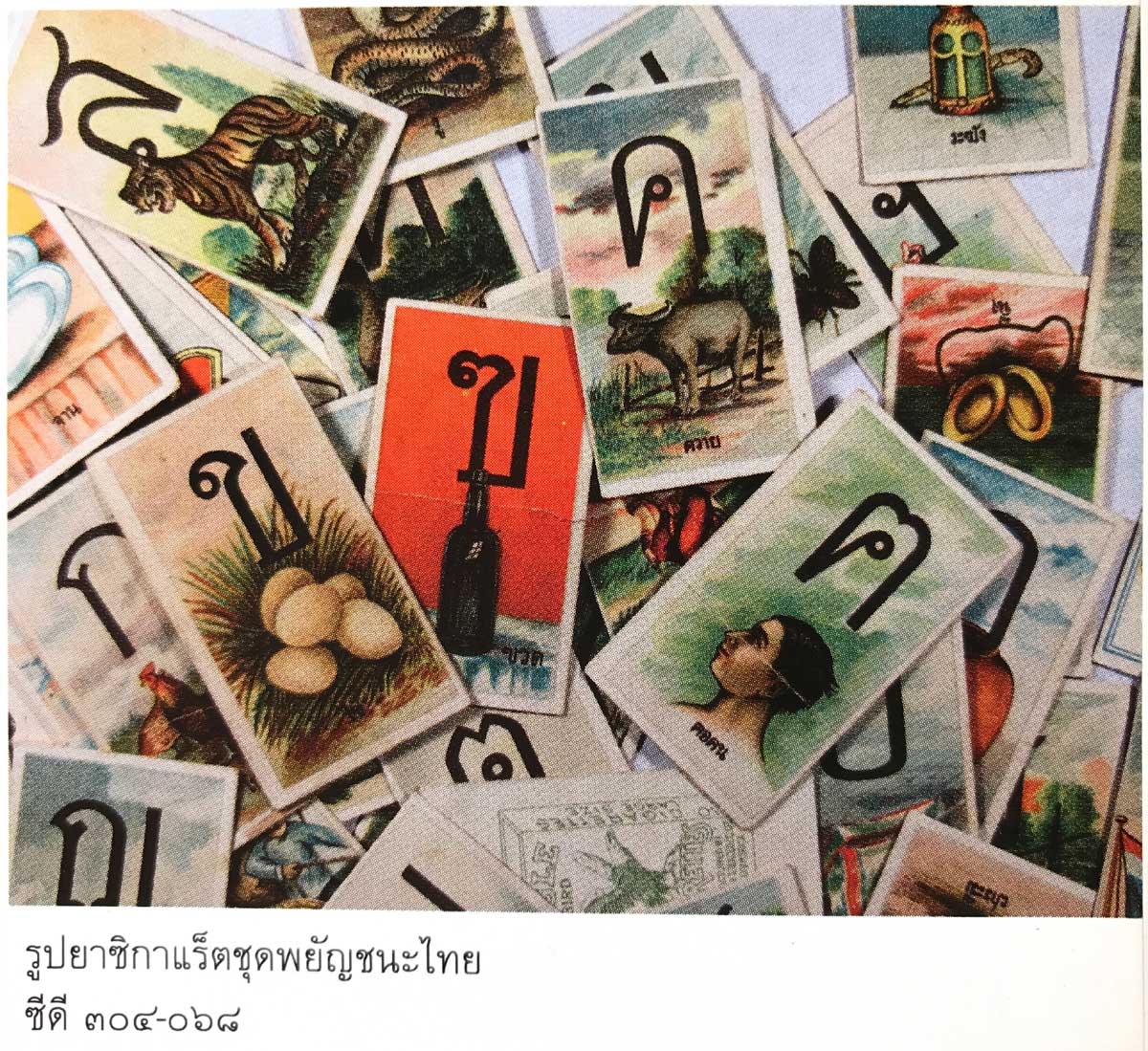
Above: cigarette cards featuring educational topics.
Other Playing Cards and Card Games
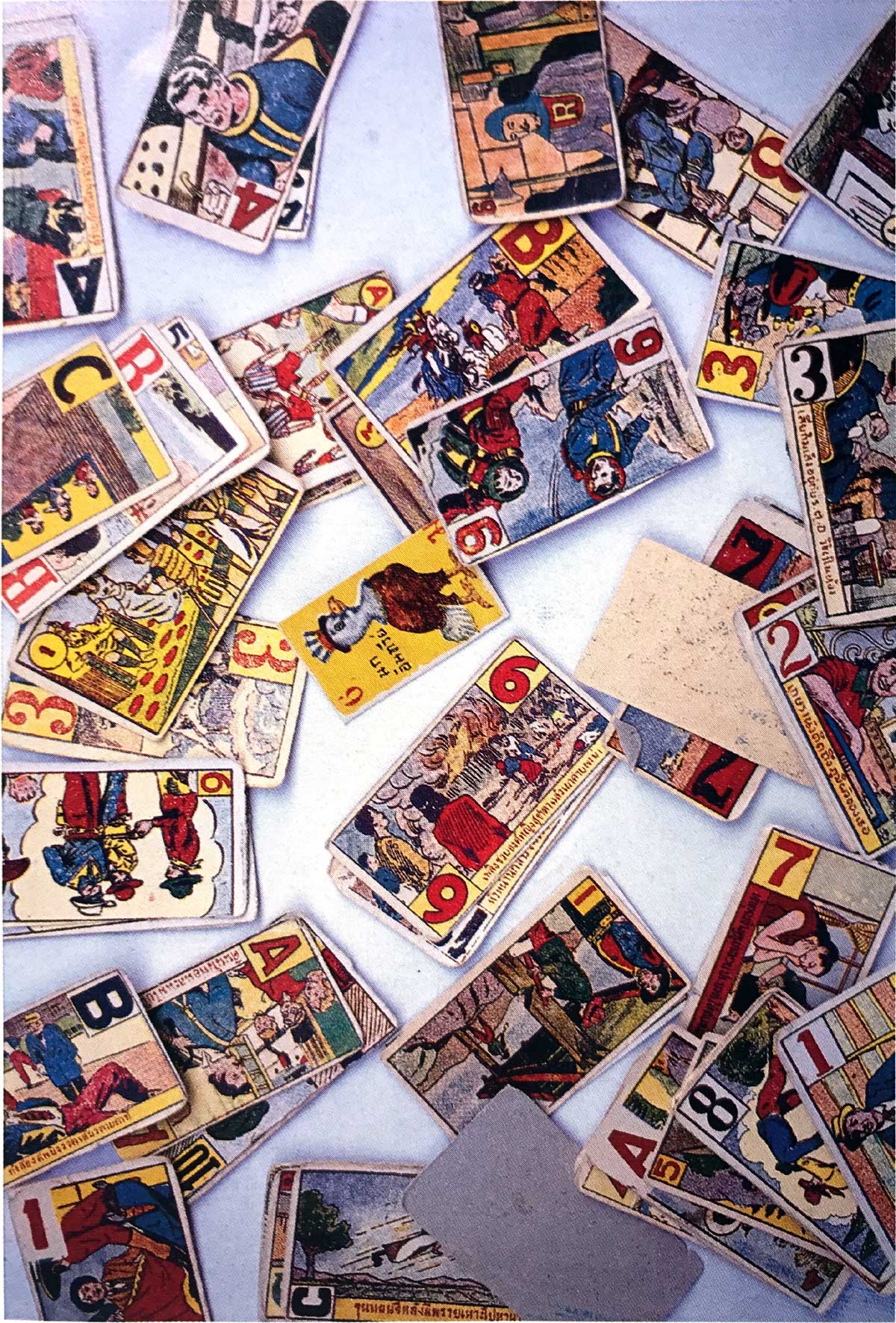
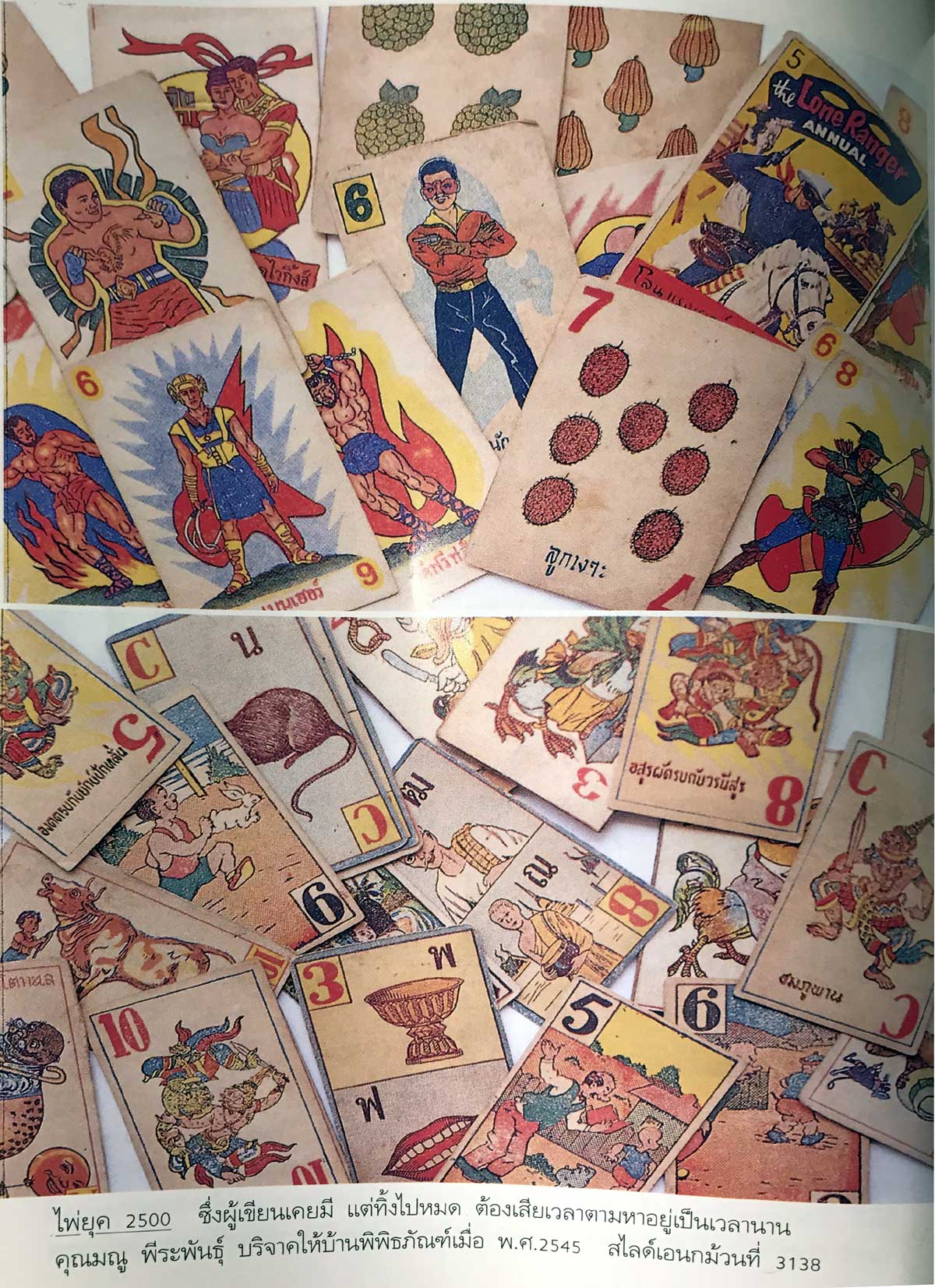
Above: assorted Thai cards.

Above: Thailand has strict anti-gambling laws.
References
Autenboer, Dr Eugeen van: The Turnhout Playing Card Industry 1826-1976, Aurelia Books, Brussels 1976
Christopher John Baker, Pasuk Phongpaichit: A History of Thailand, Cambridge University Press, 2005
Ministry of Finance, Department of Commerce and Statistics (name varies), Statistical Yearbook of the Kingdom of Siam (title varies), 1916+.

By Adam Wintle
Member since March 15, 1997
Adam has been involved in developing the site as well as reviewing new decks and conducting research. He is particularly interested in innovation, Kickstarter and East Asian cards. He is a member of the IPCS and webmaster of the EPCS.
Related Articles

Hanuman and the Five Riders
A selection cards showing characters from the 1975 Thai-Japanese film.

Quên Tarot
A mystical voyage of love and self-discovery created by Duy Khánh Võ.

Calon Arang • Калон Аранг - Бали
Calon Arang, a figure from 12th-century Javanese and Balinese folklore known as a witch skilled in b...

Back to the 80s Lenormand
History meets pop culture in a 36-card set that pays tribute to Lenormand's legacy and the colourful...

Joseph Bardou & Fils cigarette papers
Delightful pack advertising Joseph Bardou & Fils cigarette papers for the Philippines.

Souvenir of Singapore, Malaya and Borneo
52 different colour pictures of Singapore, Malaya and Borneo from the early 1960s.

Chinese Money-Suited Playing Cards from the British Museum
This deck of Chinese playing cards, donated to the British Museum in 1896, is believed to have been ...

Russian Playing Card History - From the Beginnings to 1917
An in-depth review of the history of card-playing, gambling, legislation, manufacture and taxation o...

SilkAir
SilkAir was a Singaporean regional airline and a wholly owned subsidiary of Singapore Airlines.

Singapore Trump
“Singapore Trump” playing cards designed by Yasuko Senshu.

Malaya 1941-1942: King George VI currency notes
Playing cards featuring King George VI Currency Notes, Malaya 1941-1942.

Marionnettes Wayang
Striking Wayang puppet designs conceived by Youdi des Aubrys from Indonesia, 1985.

Wayang Bridge Cards
Traditional Wayang puppet theatre characters from Indonesia.

Garuda Indonesia Airline
Souvenir pack from Garuda Indonesia, the national airline of Indonesia, c.1985.

Dutch costume playing cards
Dutch costume playing cards made for the Dutch market in the second half of the 19th century.

The Most Popular Card Games in Casinos
The Most Popular Card Games in Casinos by Katelyn Oakley.
Most Popular
Our top articles from the past 28 days




